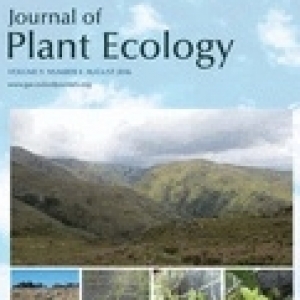Notícias
Novo artigo do LEEP, liderado pela Profa. Andreza Neri, foi publicado no Journal of Plant Ecology
publicado em
Aims: The vegetation on Brazilian Páramos consists of assemblages that are driven mainly by the influence of strong environmental filtering. It is very important to understand the effect of environmental variation on taxonomic diversity and on functional diversity. Considering the lack of information about the functional diversity in Brazilian Páramos, we analysed for the first time the effects of altitude and edaphic attributes on functional traits, as well as on taxonomic and functional diversity. We also wanted to answer the questions: Which ecological strategies are favourable in high altitude grassland? Does soil attributes determine distributions of traits in high altitudes grassland? Considering the studied altitudinal gradient is altitude an important variable in the community assembly?
Methods: the study was conducted on three mountains: Mammoth (1850 m), Elephant (1790 m) and Totem (1690 m) in Serra do Brigadeiro State Park, Minas Gerais State, Brazil. Those mountains represent the “Serra das Cabeças”, a smaller ridge which is surrounded by the Atlantic Forest, one of the 25 hotspot of biodiversity. The samples were taken using 100 plots of 1m2 per mountain that were randomly distributed. All plants except mosses were sampled. The taxonomic diversity was evaluated using richness, Shannon diversity, effective number of species and Pielou evenness. For the functional diversity we considered the functional richness (FRic), functional evenness (FEve) and functional divergence (FDiv). Generalized linear models (GLM/Poisson and Quasi-Poisson) were used to evaluate the effect of abiotic variables (altitude, soil depth and soil chemical attributes) on biotic variables (number of species and individuals, life form, dispersal and fruit type) and ordinary least squares regression to evaluate the effect of abiotic variables on the functional and taxonomic diversity.
Important Findings: The soil variables presented a considerable edaphic gradient associated with altitude. The soil in Serra das Cabeças plays an important role for the plant diversity: richness and diversity index were positively related with fertility. With regards to the life form, nanophanerophytes tended to increase with altitude and soil depth, while therophytes tended to decrease with altitude. The dispersal type was also associated with the abiotic variables: autochory decreases with altitude, while zoochory increases. Functional richness increases with fertility and the functional evenness with altitude. The studied gradient showed that altitude is working as a filter for functional traits and indices, and is, together with soil attributes, an important determinant for the distribution of plants on Brazilian Páramos.